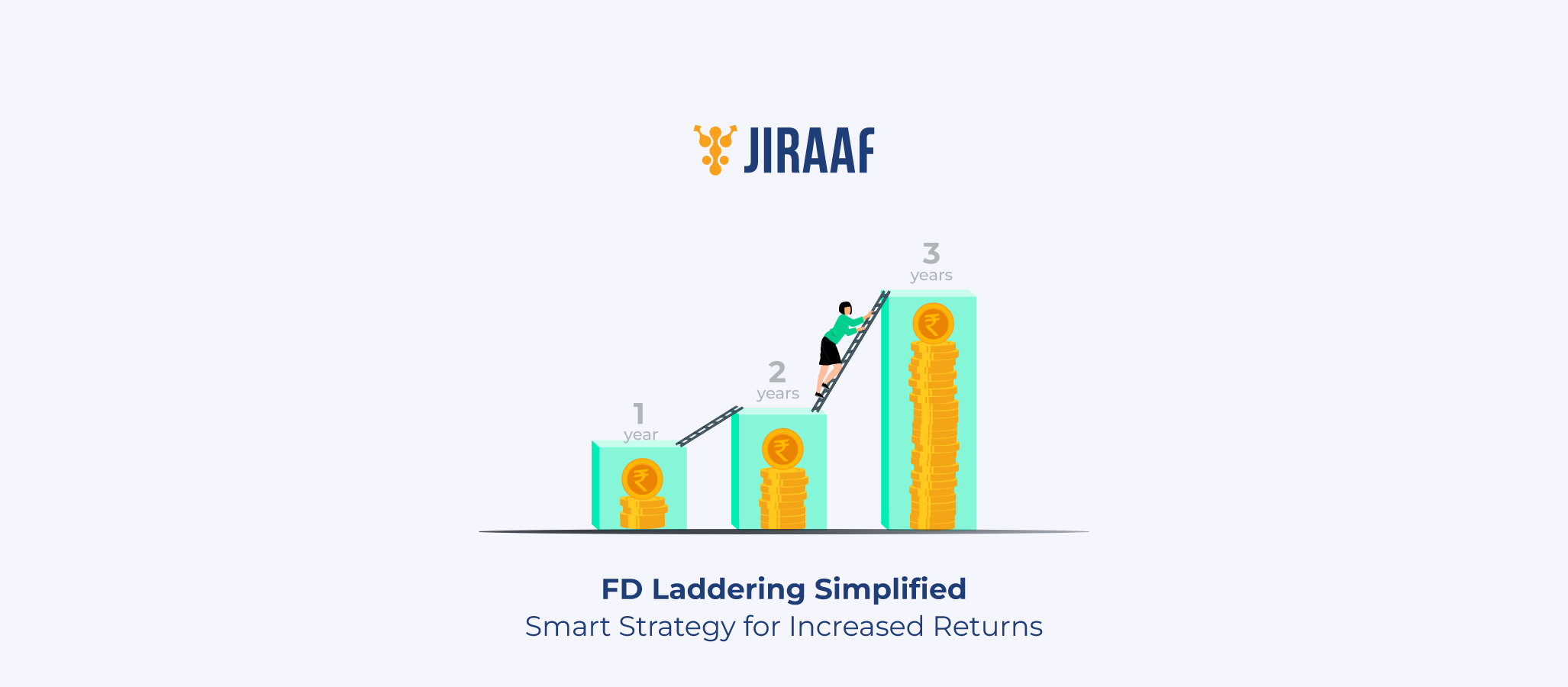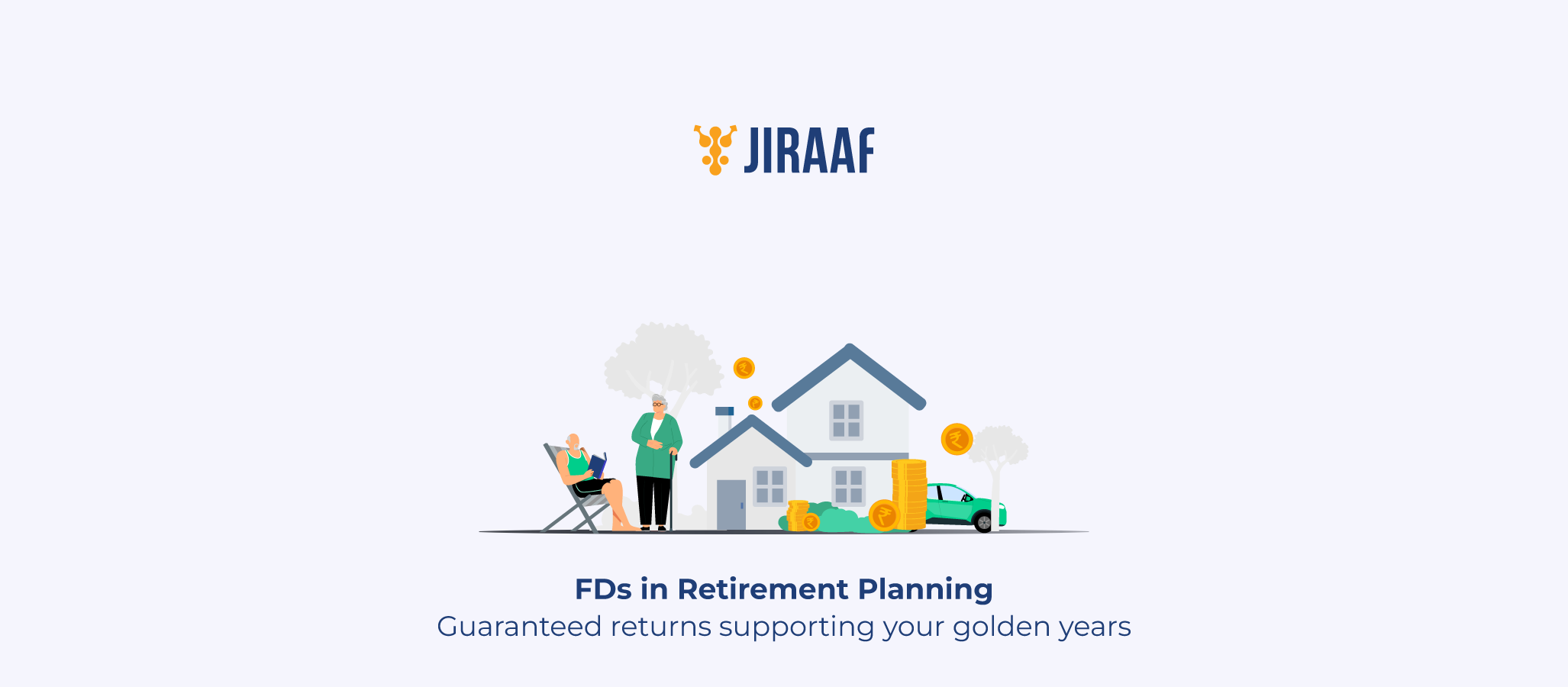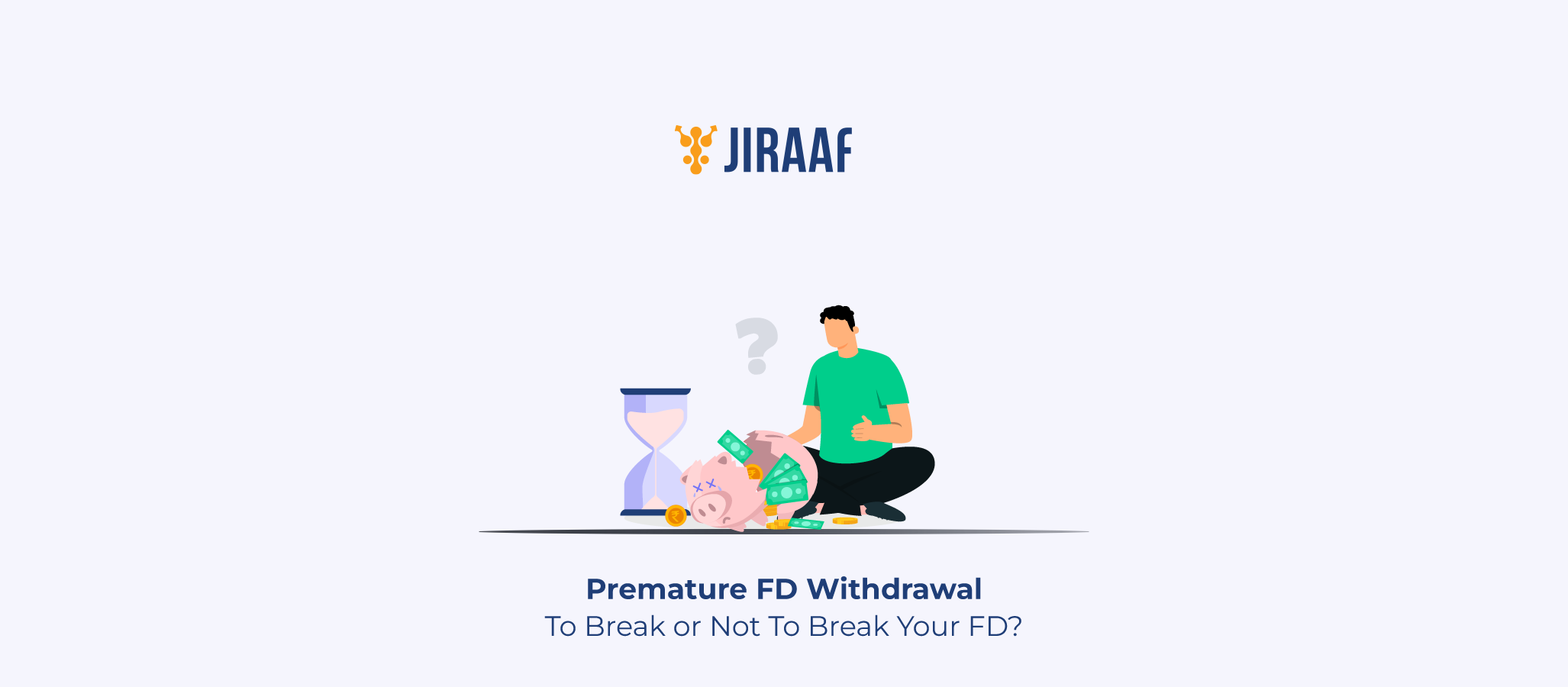FDs rarely make headlines or any noise; most investors treat them as a place to park money safely and not grow it. But those who understand the nuances of smart strategy know better. By staggering maturity dates across varying interest rate cycles, FDs can unlock higher returns, offering liquidity when needed, and even outpacing inflation over time.
But what is the secret, and how can you manage capital growth with FDs? Simple; with FD laddering. It helps you turn the very thing that makes FDs boring—lack of liquidity and fixed returns—into a strategic advantage.
FD laddering divides your investment across several FDs with different terms for best returns and liquidity. While shorter-term deposits give you regular access to funds without early withdrawal penalties, longer-term FDs yield higher interest rates. How can you get the best of both worlds? Let’s learn that, and much more, further in the blog.
Why FD Laddering Works
FD laddering is effective because it takes advantage of the fixed deposit structure to optimize three crucial factors: yields, liquidity, and risk.
As each FD matures, you can reinvest them at the current interest rates, taking advantage of future rate hikes with lesser risk. If rates decline, only a portion of your money is locked in at lower yields, leaving the rest still invested at greater rates. This approach helps you find a healthy balance between risk management, flexibility, and earnings.
Let’s look at some reasons why this strategy remains one of investors’ favorites.
Balances Liquidity and Returns
By carefully spreading your investments over various tenures, FD laddering helps you achieve the ideal balance between liquidity and rewards. This approach combines the best features of numerous short-term FDs, which give liquidity, with a single long-term FD, which offers higher rates, rather than locking all your money into one FD.
You can set up a maturity schedule to maintain a portion of your money earning greater long-term interest while ensuring regular access to cash. You can also reinvest the amount at the present market rates once they mature, reducing the impact of rate declines and taking advantage of growing interest trends. The outcome is a systematic approach that lowers risk, improves your profits, and keeps your funds ready if you need them earlier than planned.
Reduces Reinvestment Risks
Since your investments are spread across multiple FDs maturing at different times, only a portion of your capital comes up for reinvestment at any given point. This way, you’re never forced to reinvest your entire corpus in a low-interest-rate environment, in turn helping reduce reinvestment risk.
Now that we know why this works, let’s see how you can build your own FD ladder.
Step-by-Step Guide to Creating an FD Ladder
- Determine how much money you would be willing to invest in an FD.
- Choose the best-suited tenure option that will work for you, and you can split your investments across different terms (1, 2, 3, and 5 years) to form a set of staggered maturities.
- Deposit each FD-allocated amount into separate FDs of specific tenures as decided and wait for them to mature.
- Reinvest the principal and interest into a new FD when the former FD matures. As each FD ages, repeat this cycle.
- Lastly, adjust your investments to keep them in line with the interest rate trends. If interest rates go up, reinvest at a higher rate. If they fall, your long-term FDs still earn higher locked-in returns.
Simple enough, right? Seems so, but make sure you decide your amounts and tenures to best fit your strategy, so that you can reinvest at a more favorable time in the future.
Example of an FD Ladder in Action
To show how returns and liquidity differ, let’s compare laddering ₹1 lakh over 4 FDs (1-year, 2-year, 3-year, and 5-year) versus a single 5-year FD.
Example
Returns Focus
| FD | Amount Invested | Tenure | Interest Rate | Maturity Value | Reinvestment Plan | |
| 1 | ₹25,000 | 1Y | 6.0% | ₹26,500 | Reinvest for 4 years at 7.5% → ₹35,186 | |
| 2 | ₹25,000 | 2Y | 6.5% | ₹28,306 | Reinvest for 3 years at 7.5% → ₹34,665 | |
| 3 | ₹25,000 | 3Y | 7.0% | ₹30,613 | Reinvest for 2 years at 7.5% → ₹33,000 | |
| 4 | ₹25,000 | 5Y | 7.5% | ₹35,906 | No reinvestment—already matured |
Final return: ₹1,38,757
Single 5-year FD
| FD | Amount Invested | Tenure | Interest Rate | Maturity Value | Reinvestment Plan |
| 5 | ₹25,000 | 5Y | 7.5% | ₹35,906 | No reinvestment — already matured |
While the single 5-year FD locks in a slightly higher interest rate for the entire tenure, maximizing returns if rates remain steady, it lacks flexibility and liquidity before maturity. In contrast, the laddered FD approach spreads investments across staggered maturities, enabling reinvestment at potentially higher interest rates over time and providing periodic access to funds without penalties, making it a more adaptable strategy in a rising rate environment.
Liquidity Focus
| Feature | FD Ladder (₹5 lakh split in 5 FDs) | Single FD (₹5 lakh in one FD) |
| Maturity Schedule | ₹1 lakh matures each year (Y1 to Y5) | Full ₹5 lakh matures only at end of year 5 |
| Liquidity Availability | Available every year | Locked till Year 5 unless broken early |
| Emergency Fund Access | Use maturing FD of that year | Must break full FD and pay penalty |
| Penalty for Early Withdrawal | None (use available FD) | Yes (loss of interest and penalty) |
| Flexibility for Expenses | High—matches with near-term needs | Low—unless planned precisely |
| Interest Rate Management | Can reinvest at prevailing higher rates | Locked at original rate throughout |
FD laddering gives you annual access to funds, reduces the need for premature withdrawals, and ensures you’re never fully locked into a single rate or liquidity timeline.
Best Practices to Maximize Your FD Ladder Returns
Here are some practical tips you can follow to maximize your FD ladder returns.
- Monitor interest rate changes. Pay attention to the rate shifts and RBI announcements. To lock in larger returns, move aging FDs into longer tenures while the rates are going up. Keep renewals brief to preserve flexibility if rates are declining. This proactive strategy reduces negative risk while assisting you in taking advantage of positive rate fluctuations. In simple words, if they go up, reinvest in maturing FDs to lock in high yields. If they are falling, wait for higher rates and keep renewals brief.
- Use an FD calculator. Use online calculators to look into different FD alternatives before building your ladder. Study the effects on returns of cumulative (compounded) versus non-cumulative (payout) interest. To avoid surprises, consider early withdrawal penalties as well.
- Be smart when you reinvest. In low-interest savings accounts, never let matured FDs sit idle. If the rates look good to you, reinvest them right away, ideally into higher-tenure FDs. For instance, to optimize profits, think about transferring a 1-year FD to a 3- or 5-year FD when it expires and rates have gone up.
- Optimize your taxes. To lower your taxable income, include tax-saving FDs (5-year, Section 80C) in your ladder. Senior citizens should benefit from their higher interest rates, which are usually between 0.5% and 1% higher. Post-tax returns can be boosted by dividing FDs between taxable and tax-saving choices.
- Align your FD ladder with your future, your goals. Also factor in the liquidity. Allocate more to 1–2-year FDs if you need frequent access to your money. Give 3–5-year FDs priority for long-term growth. Without compromising on returns, a carefully thought-out FD ladder guarantees that you will have money when you need it.
Common Mistakes to Avoid While Laddering FDs
Now that we know what to do, let’s look at some mistakes to avoid while building your FD ladder.
- Locking all your funds at once in a low-rate periods
A very common mistake is pooling all your money in when interest rates are at their lowest. Alternatively, you could break your investments. Invest slowly as interest rates rise.
- Ignoring TDS and tax implications
Banks deduct 10% TDS from FD interest that exceeds ₹50,000 annually (₹1,00,000 for seniors). What can you do to save some taxes? Split FDs among family members to stay below thresholds or submit Form 15G/15H to avoid TDS.
- Putting all your money into one bank
All FDs held in one bank are at the risk of rate cuts or institution instability. Spread your money around two or three banks, giving safer banks (like public sector banks) priority for larger deposits and better rates (like small finance banks) for smaller ones.
- Ignoring post tax returns and inflation
Traditional FDs usually give post-tax returns of 4–5%, which might not be higher than inflation. For long-term objectives, boost your ladder with higher-yielding products (such as debt funds or SCSS).
When FD Laddering Might Not Be Ideal
While you can balance your investments, returns, and liquidity very well using a laddering strategy, it might not always be the best fit. Here are some potential cases when this could hold true:
- You need short-term, immediate liquidity. If this is the case on a regular basis, even a well-structured FD ladder might not suffice. Short-term FDs have a very limited scope of profit, and you might have to face premature withdrawal penalties. It is a better choice to keep some cash handy in liquid funds or a high-yield savings account.
- When inflation periods are surging. Your money gradually loses value as prices increase more quickly than you earn interest on your FD. Why? FD returns after taxes might not even be equal to inflation. The solution? For long-term growth, think about inflation-proof investments like stocks or the RBI’s floating-rate bonds.
- You need to invest a large sum. For huge amounts of money (say ₹50+ lakhs), FD interest rates might just push you into higher tax brackets. To avoid this, you can use debt funds or corporate bonds.
- The banks are raising their interest rates quickly. If this is happening often, and rapidly, locking into a ladder too quickly means you might just miss out on better deals later. You can hold your cash in short-term deposits until rates stabilize, then ladder.
While FD laddering does well in an average economy, it struggles in times of hyperinflation, unstable interest rates, or pressing financial situations. Always align the plan with your financial goals. Simpler or more profitable methods are more effective.
Final Thoughts
FD laddering helps you layer your deposits for efficiency, but to truly maximize its potential, you need to think beyond the usual. Use this structure not only to park idle funds but to build buffers for life goals—education, EMIs, medical needs, or even your parents’ retirement income.
You can even pair your FD ladder with floating-rate savings instruments like RBI floating-rate savings bonds or short-duration debt funds. This hybrid strategy protects your liquidity while letting a portion of your capital respond to market shifts. You get stable returns with optional upside.
And here’s another savvy move you can try. Sync your ladder with your personal cash flow calendar. Align your FD maturities with school fees, premium due dates, or major annual expenses. That way, you’re not just earning interest; you’re controlling your cash flow with precision.
Discover fixed income investments with Jiraaf, a SEBI registered online bonds platform that educates and brings access to a wide array of bonds. Sign up today to explore diversified fixed income investment opportunities to support your goal-based wealth creation journey. Start investing!



